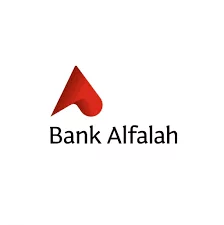New York January 13 2022: The tanker freight markets in Q4 2021 did not fulfil expectations of a historically strong quarter, while stricter measures and lockdowns imposed in several countries amid the recent omicron variant and the uncertainty over its impact have shaped an obscure outlook for the tanker markets in the first half of 2022.
Pakistan National Shipping Company (PNSC) provided negative return of over 36 percent during the period of last one year.
A L S O || R E A D
International Steel To Benefit From Anticipated Higher US Imports
OPEC+, which controls about half of global oil supply, stuck with supply increases throughout Q4 2021, with many members, however, underperforming, incapable of hitting their production targets. According to an S&P Global Platts Survey, in November, the coalition pumped around 510,000 b/d below its collective targets. Underinvestment and disruptions in some key oil fields in Angola, Nigeria, Malaysia, and Equatorial Guinea, has resulted in reduced output from those members far lower than their quota. Notably, Nigeria’s oil output fell to 1.47 million b/d in December, reaching a two-decade low.
The spike in freight rate for the West Africa-to-East, 260,000 mt route, fizzled out by end of 2021. On Oct. 25, freight for the West Africa-to-East, 260,000 mt route, was assessed at $14.3/mt, the highest level recorded since the beginning of the year. The short-lived spike was fuelled by strong adjacent markets, with demand in the West African and USG region being particularly strong. According to the British-based ship broker Simpson Spence Young (SSY), 32 and 28 VLCCs loaded in West Africa and the USG respectively in November. However, in the following months, the market experienced a lack of activity, and ample tonnage availability resulted in rates dropping by 12.52% to $12.51/mt by Dec. 31 on the West Africa-to-East, 260,000 mt route. “The West African market has been non-existent lately,” a shipowner said.
A L S O || R E A D
Urea Supply Increase To 4 lac 40 thousand Bags On Per Day Basis
Aframax Baltic rates gain
In the Aframax markets, in the Baltic, rates recorded substantial gains on the back of very cold weather in the region. A tight tonnage list for ice class vessels and strong demand, caused freight to rise well above the quarter’s average. According to S&P Global Platts data, freight for the Baltic-to-UKC, 100,000 mt route, was assessed at $18.42/mt on Dec. 31, compared to the quarter’s average of $11.72/mt. Similarly, the time charter equivalent for non-scrubber vessels for the same voyage was assessed at $37,421/day, compared to the quarter’s average of $10,727/day. The need for ice class vessels has created a two-tier market in the North, with the time charter equivalent basis 0.5% bunker fuel, for the UKC-to-UKC, 80,000 mt route, being assessed at $9,921/day on Dec. 31, against the quarter’s average of $6,358/day.
Libyan instability to affect market activity
Towards the end of the quarter, oil prices remained strong on the back of tight oil stocks and a force majeure on Libyan crude oil exports, where key southwestern oil fields were shut down after a blockade by a unit of the Petroleum Facilities Guards on Dec. 20.
According to market sources, the country’s output has fallen to 900,000 b/d currently, compared to 1.2 million b/d in mid-December. Any sustained drop in Libya’s output will not only have a negative effect on tanker demand but could also counter OPEC+ efforts to boost production. According to the IEA, OECD commercial oil stocks in October were 243 million barrels below the 5-year average, a result of demand outpacing supply over the past several months. As announced on Jan. 4, OPEC+ stuck to its existing policy of oil output increases, approving another 400,000 b/d production boost. However, unless countries such as Saudi Arabia, UAE and Kuwait increase their output to compensate for other members’ shortfalls, the coalition’s output will hardly reach the agreed amount.
Following OPEC+ decision to increase output and given a historically weaker Q1 compared to Q4, it is expected that the market will experience an oil surplus in the first months of the new year. This would lead to an oil price drop and a potential shift in oil’s market structure from backwardation to contango, creating increased tanker demand for inventory replenishment given the latest drawdown. However, the unrest in one of the largest oil producing countries, Kazakhstan, and declining output in Libya, could pose an oil supply threat as the omicron variant is not projected to have a great impact on demand.










